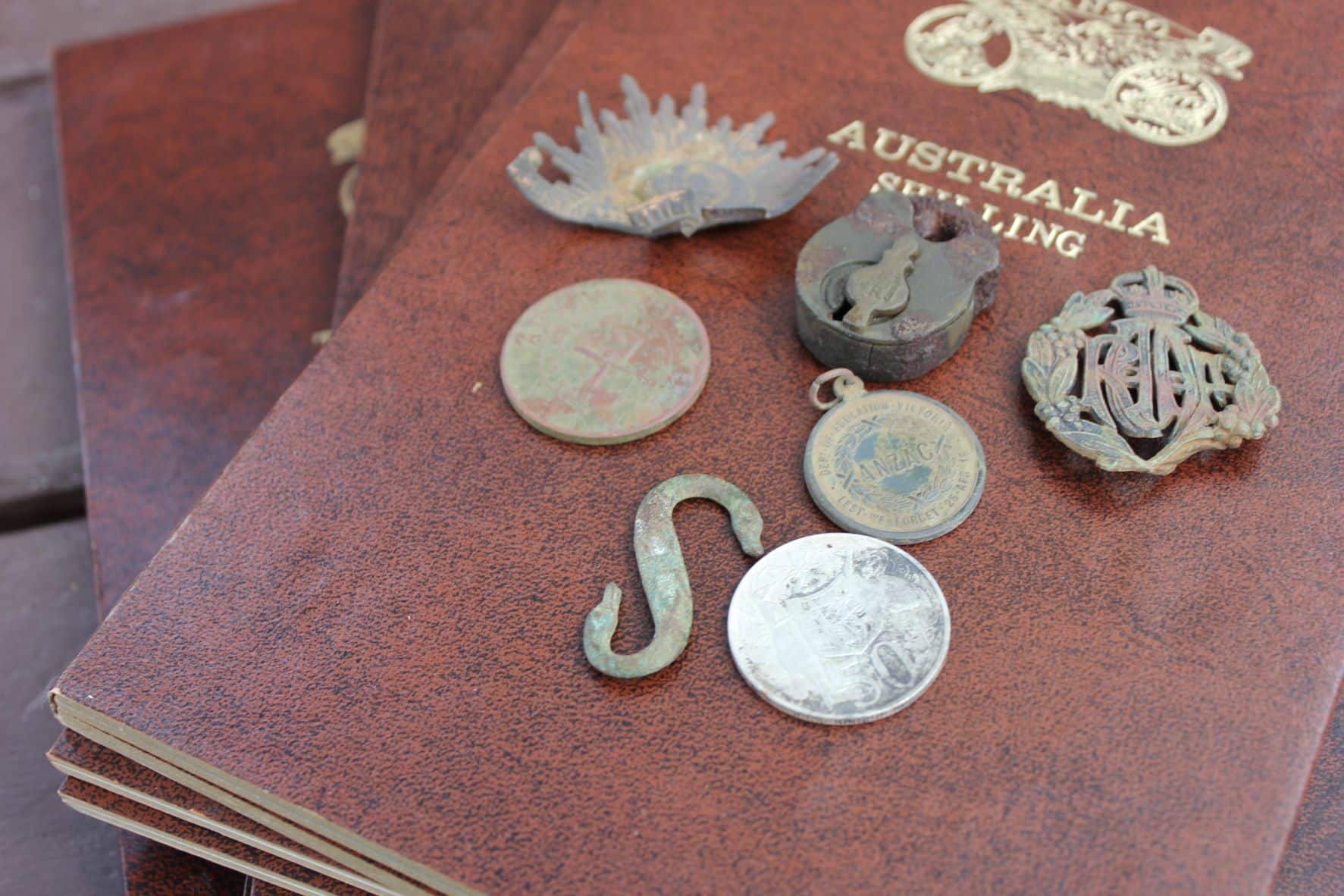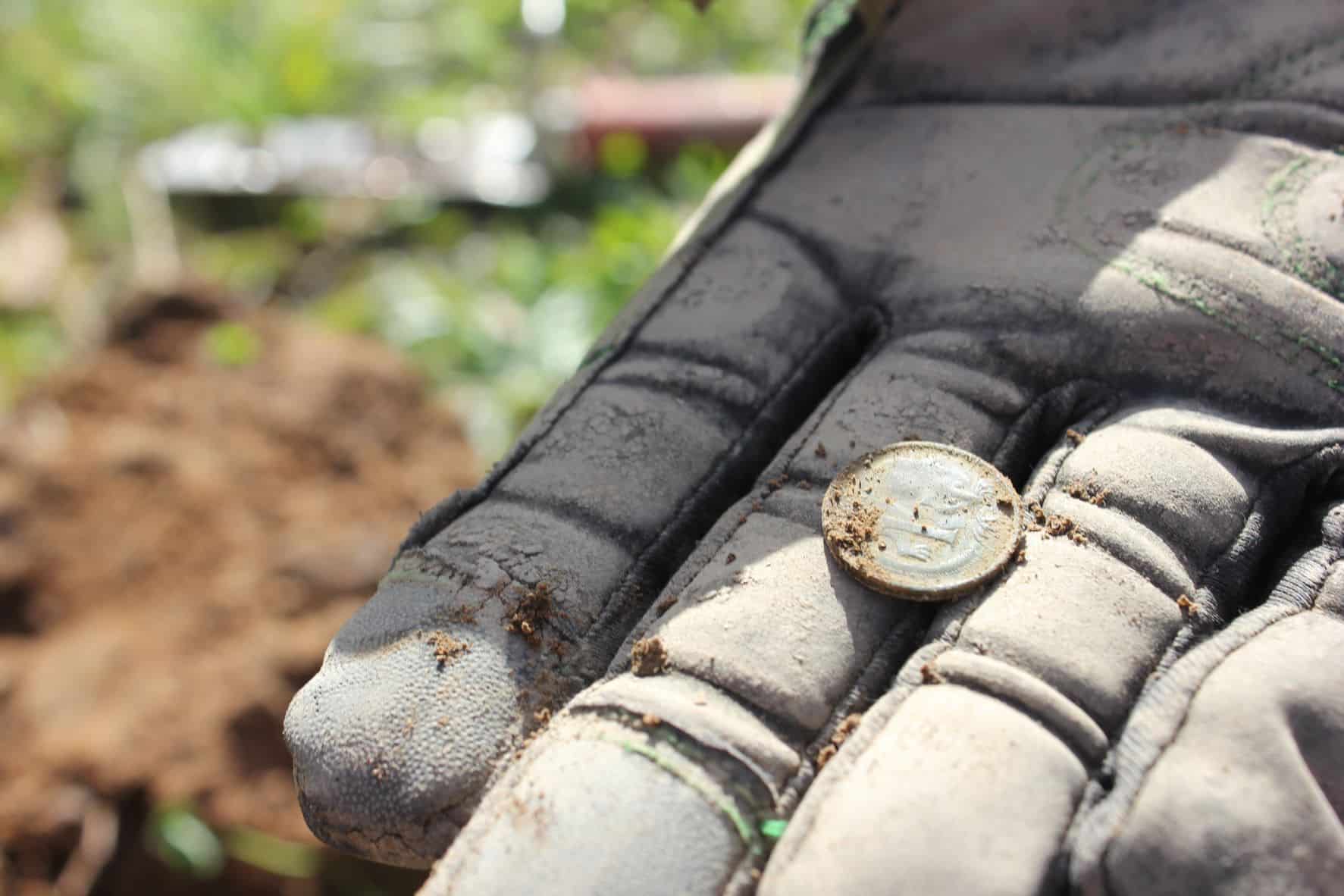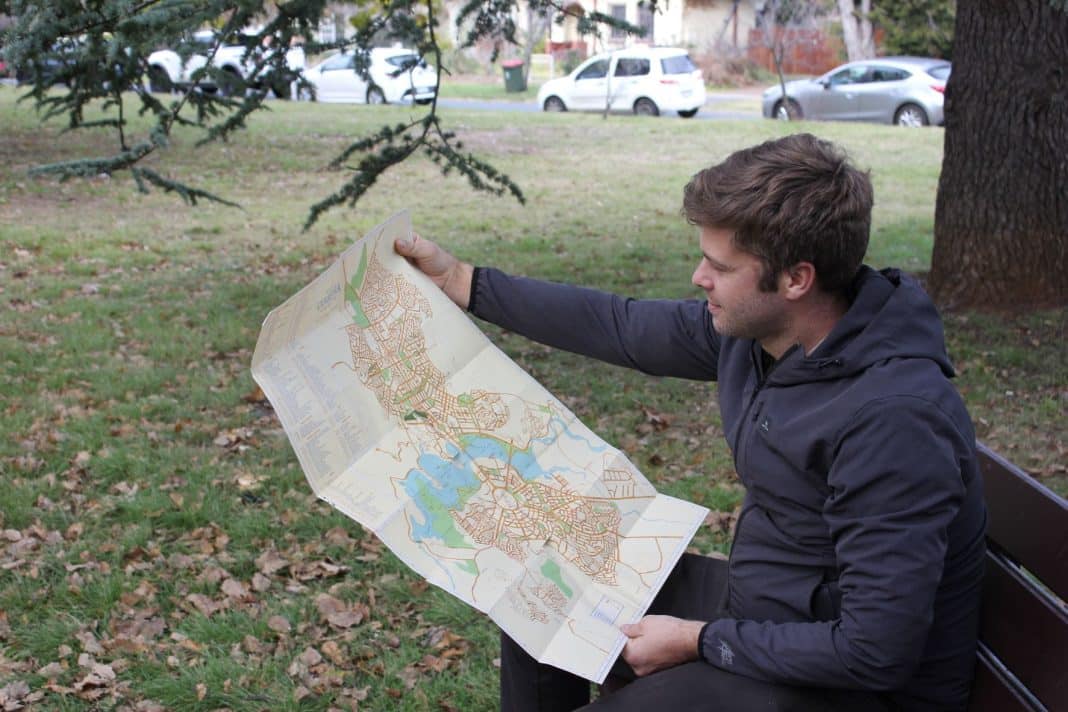Cabinetmaker by day, Gregory Anderson is also a part-time treasure hunter, scouring Canberra and surrounding regions whenever he gets a chance.
He has always been excited by the thrill of the hunt; he recalls being more excited to hunt for eggs at Easter rather than opening presents at Christmas.
“It’s the suspense of what it might be that always drives me to get to the next target,” Greg said.
These days, treasure to Greg is no longer chocolate eggs; rather, it comes in the form of old coins, pre-decimal coins to be precise. He started out fossicking for gold in 2017, but as life got busier, it was harder to find the time to drive out to places like Bathurst. Then around two years ago, after a bit of research, Greg invested in his trusty detector and began his great coin hunt.
“Basically, the coins I look for they stopped producing in 1966 and the coins themselves are either 50 per cent silver or 925 sterling silver which give them a different sound on the detector so it can be distinguished a lot more easily between that rubbish.”
CW had the pleasure of joining Greg as he detected around a park near Ainslie shops, giving us a few inside tricks on how to find the best treasure.
When deciding where to hunt, Greg whips out his treasure map, currently a secondhand map of the Canberra region from 1964. When looking at the map, the areas marked in green indicate that it used to be (and could still be) a public space like a park.

The detector measures the electrical conductivity of an item beneath the soil by transmitting an electromagnetic field from a search coil, displaying different numbers and noises depending on the size, composition, and location of the target. To put it simply, Greg explained that some coins such as shillings and threepences will have a higher reading, while other coins like modern day 20 and 50 cent pieces have a lower number. This help Greg to determine what is worth digging up, though sometimes it can be difficult to tell.
“Something with a high number and a higher sound if it has a ‘bong bong’ to it, means that it’s probably on the surface and you don’t have to dig too far to it; if it has a very faint sound to it means it could be quite deep or quite small.”
The trick to finding coins is heading to places where people handled money or money could have fallen out of someone’s pockets or purses without them noticing.
“I look for human activity, so, say an area where people might be sitting down, people may have done that 50 years ago. Around old trees in hotter weather people sit under trees, so that’s a pretty good spot to look as well.”
Walking around with his detector can get Greg noticed. Most people who stop to ask what he is doing are polite and he always has time to answer their questions, particularly those from the older generations, who often have stories to share in return, sometimes leading to big finds. Greg recalled one interaction that led to a discovery of around 40 pennies and a handful of silver coins.
“An older gentleman came up to me and asked why I was searching that particular area. I told him it was because the bus stop was there and he goes ‘well, no, I used to be the bus driver and I can tell you now I used to drop kids off the kids off over there in front of the scouts hall’.”
However, it’s not always treats that Greg finds beneath the soil; he often stubbles across pull tabs, bottle caps and, disturbingly, live ammunition. When unsure of what his find could be, like most of us, Greg turns to the internet.
“The worst one I found was actually the drain out of a toilet trough and I had no idea what it was. I took it home, I cleaned it up and posted it online asking people ‘what do you think it is?’ Unfortunately, they told me,” he smiled.

Greg is optimistic he will find the holy grail of Australian coin hunting – the full Sovereign. While continuing his quest, he also hopes to complete his books of rare coin sets, with one already almost finished.
An apple watch box contains a few of Greg’s favourite finds including: a 1946 roo penny, which are a bit tricky to come by as there were only around 3,000 of them made; a round 50 cent piece from 1956 when they were still made from 80 per cent silver; a small vial containing gold nuggets; an old lock that dates from somewhere around the 1820s; an ANZAC medallion which was handed out to school children one year after Gallipoli; and, of course, the one cent piece he found while out with CW.
Follow Greg on social media at instagram.com/detectingcanberra
Get local, national and world news, plus sport, entertainment, lifestyle, competitions and more delivered straight to your inbox with the Canberra Daily Daily Newsletter. Sign up here.



